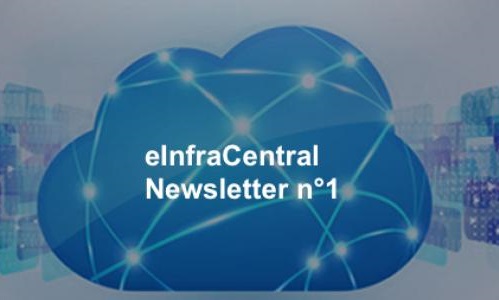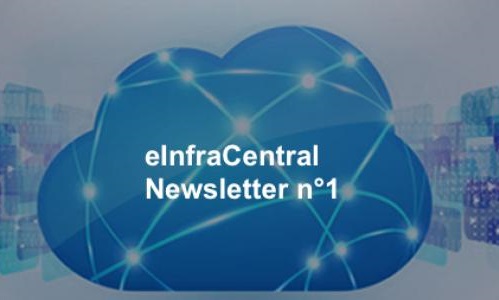
eInfraCentral - European E-Infrastructure Services Gateway
 |
eInfraCentral’s mission is to ensure that by 2020 a more varied set of users (including industry) benefits from European e-infrastructures. This should take place by creating a common approach to defining and monitoring e-infrastructures services and discover where improvements can be made in delivering e-infrastructure services. |
eInfraCentral is built around three core objectives:
1) structure an open and guided discussion between e-infrastructures to consensually define a common catalogue for their services;
2) develop a single-entry point (the eInfraCentral portal) for end users to browse the service catalogue, and enhance the monitoring of key performance indicators (KPIs); and
3) draw policy and sustainability lessons for the future development of a European e-infrastructure ‘market place’ as an extension of the common service catalogue and portal so that it includes a much broader range of e-infrastructures and services.
Along with the EOSC Pilot projet, the eInfraCentral project is a ‘foundation stone’ of the future ‘European Open Science Cloud’ (EOSC) initiative of the European Commission which aims to provide European science, industry and public authorities with world-class digital infrastructure that bring state of the art computing and data storage capacity to scientists and engineer in the European Union.
Service Catalogue
A key objective of the project is the development of a common Service Catalogue to present in a homogeneous and harmonised way the available services offered by the wide range of European e-infrastructures to the European researchers and public-at-large. This will help address the need for both a unified list of services being available online as well as a standard and user-friendly description of all related services.
During the spring 2017, the project partners, in collaboration with flagship European e-infrastructures, have assembled a first draft catalogue of services currently available and have also performed an initial classification of available service catalogues as part of their current state-of-play. In parallel, global marketplaces and their respective services have been systematically assessed and contacts have been initiated with e-infrastructures beyond European borders, in order to collect best practices from various market segments as well as regions from all over the world.
